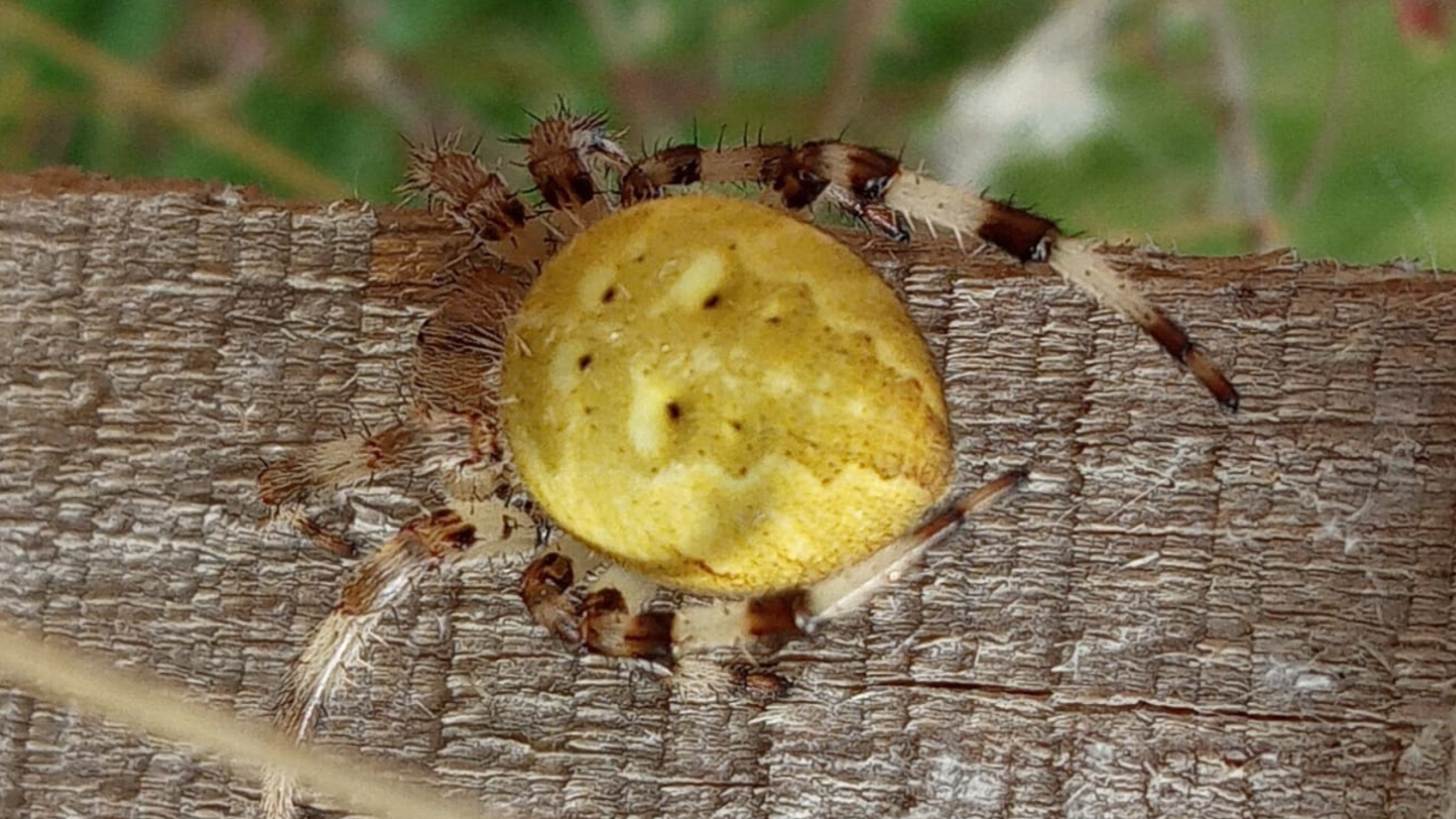
Not everything hides away in the winter
Winter is a time that is usually associated with cold, darkness and a lack of bug-life flying around! But did you know that there many invertebrates that are still active during this period? Find out below about some of these lovely species.

Ivy bee (Colletes hederae)
This solitary bee (a bee without workers) is a relatively new addition to the UK, as it was first recorded in 2001. It is a tiny bit bigger than a honeybee, with fluffy, ginger thoraxes and an orange and black, stripy abdomen. It nests within sunny, sandy banks that are south-facing, ideally close by to ivy! As the name suggests, the main food plant of this species is ivy, which is a late flowering species. Due to this, the ivy bee is the last of the solitary bees to appear, flying from late August until November.
November moth (Epirrita dilutata)
This moth is from the Geometridae family, alongside carpet moths and wave moths. These moths have the iconic ‘inchworm’ caterpillars, which move in a cartoon looping fashion. It is a late flying species, mostly seen between September to November. These can be hard to identify, looking very similar to the Pale November moth and the Autumnal moth.

Rosy woodlouse (Androniscus dentiger)
Woodlice can be found throughout the year, hiding within deadwood and leaf litter. The rosy woodlouse, as the name suggests, is a bright pinkish orange, often described as a salmon pink. This species is found within stones and rubble!

Leopard slug (Limax maximus)
This is a large slug (10-20cm), the scientific name literally meaning ‘biggest slug’! It is pale, with black spots and patches over its body. Its diet is mostly plants and fungi, but it will eat carrion and will even predate other slugs. These are often found within damp areas of woodlands, as slugs rely on moisture to survive (like woodlice).

Four-spotted orb weaver (Araneus quadratus)
A large spider, with females reaching around 17mm in length! It is a grassland species, using long vegetation to string its orb web across- an elaborate web with a funnelled middle. It will build this orb web close to the ground to catch insects such as grasshoppers. It is the UK’s heaviest spider, with a large abdomen that is variable in colour- dark brown, bright orange or yellow-green abdomen with four white spots. You can also identify it by its banded legs.
Did you know that female orb weavers can actively change their abdomen colour?
Discover more in the Heart of England Forest
If you are curious to discover more species in the Forest, then head over to our spotters guides where you can learn about the autumnal birds you’ll see or marvellous fungi you are likely to come across while out and about.
Please do remember to tag us in your photographs on social media: Facebook and Instagram.



